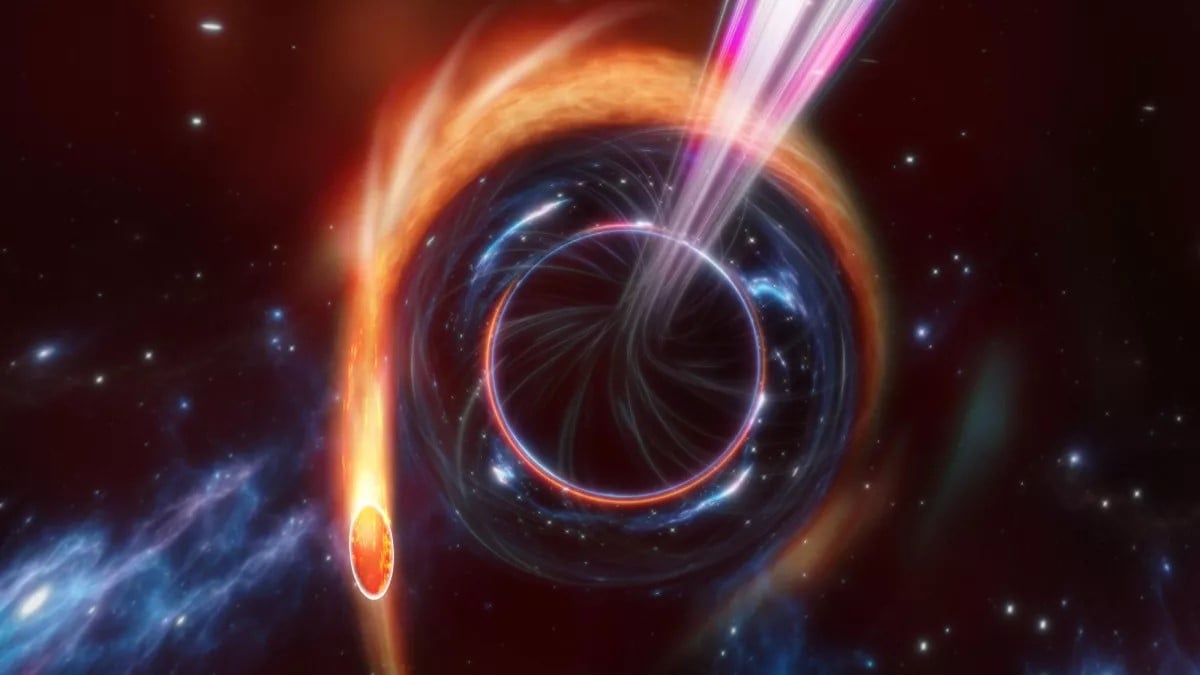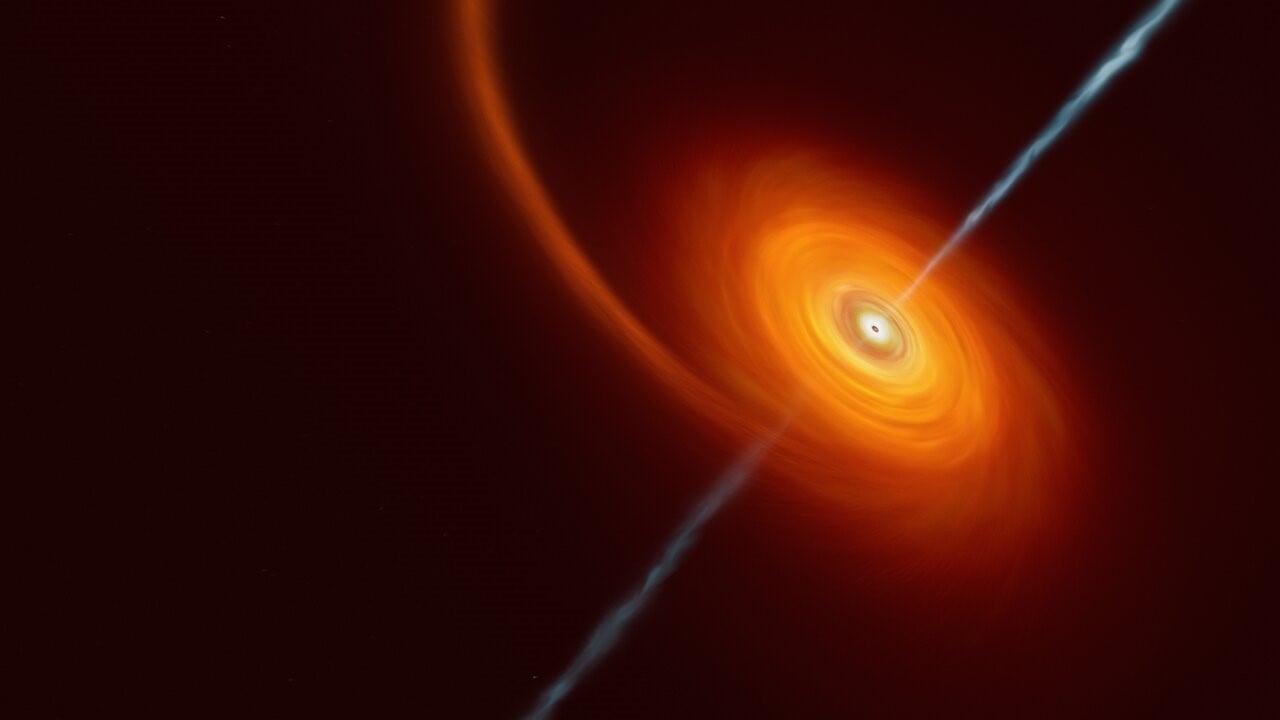A supermassive, distant black hole was observed by astronomers eating up a star and then blasting its remains from the catastrophe directly toward Earth.
According to astronomers, the vicious destruction of the star, called a Tidal Disruption Event (TDE), was observed in visible light when a star passed too close to the black hole and was spontaneously swallowed up.
Although previously unknown to astronomers, the discovery of the black hole could signal a new way to observe such extreme events— usually only detected in high-energy light, such as gamma-rays and X-rays.
Nial Tanvir, an astronomer at the University of Leicester in the U.K, said in a statement, “We have only seen a handful of these jetted-TDEs and they remain very exotic and poorly understood events.”
“Astronomers are thus constantly hunting for these extreme events to understand how the jets are actually created and why such a small fraction of TDEs produce them,” he added.

Tanvir is also a co-author of the new research conducted by the European Southern Observatory (ESO), which operates some of the telescopes used in the study.
The process of a black hole eating up a star
When stars meander too close to black holes, the incredibly powerful tidal forces created by gravitational influence tear them apart. It is this process that astronomers call TDE.
During the process of ripping up the stars, approximately one percent of TDEs of the black hole also blast out jets of plasma and radiation from the poles.
The TDE was discovered when a survey telescope, the Zwicky Transient Facility (ZTF) in California, sent out an alert about an unusual visible light source. ESO’s Very Large Telescope (VLT) in the Atacama Desert region of Northern Chile jumped to examine.
The TDE, dubbed AT2022cmc, first resembled a gamma-ray burst (GRB), the most potent source of electromagnetic radiation in the known universe—although the origins are unknown.
Over twenty-one telescopes were used to observe AT2022cmc in various wavelengths of light, including the Hubble Space Telescope and the Neutron Star Interior Composition Explorer (NICER) X-ray instrument aboard the International Space Station.
According to the scientific paper, published on November 30th, “The event started when an ill-fated star approached the supermassive black hole (SMBH) on a nearly parabolic trajectory and was ripped apart into a stream of gaseous debris.”
“About half of the mass stayed bound to the black hole, underwent general-relativistic apsidal precession as the gas fell back towards the pericenter, and then produced strong shocks at the self-crossing point,” it is stated in the paper.
However, astronomers frequently use survey telescopes such as ZTF to scan the sky for signs of short-lived and extreme events. Then, more focused telescopes like the VLT can follow up in pursuit of greater detail.
VIDEO:
Amazing observations from the star blast

According to data gathered after observing the AT2022cmc, scientists said the jetted beam from the TDE was initially red in color before it decayed over four days and changed to a blue hue.
Dheeraj Pasham, an astrophysicist at the Massachusetts Institute of Technology and the first author of one of the studies said, “Things looked pretty normal the first three days.”
“Then we looked at it with an X-ray telescope, and what we found was the source was too bright,” he reported of the NICER observations. He also noted that the signal remained 100 times more powerful than the afterglow from any gamma-ray burst seen to date.
“It was something extraordinary,” he maintained.
According to data, the source of AT2022cmc was located at an unprecedented distance from Earth, and the light began its journey when the universe—approximately 13.8 billion years old—was just one-third of its current age.
However, the data also revealed that the black hole and star blasts weren’t a result of a gamma-ray burst.
The only scenario that matched the light profile recorded by these telescopes was the rare case when a TDE jet—containing matter moving at 99.99 percent of the speed of light—pointed right at Earth.
TDE is brighter because it’s facing Earth
Giorgos Leloudas, an astronomer at DTU Space in Denmark and co-author on the new research, said, “Because the relativistic jet is pointing at us, it makes the event much brighter than it would otherwise appear, and visible over a broader span of the electromagnetic spectrum.”
Pasham still noted that the jet is still pretty bright—so bright that astronomers calculated the black hole is swallowing up about half the sun’s worth of mass each year.
He also suggested that the volume of light indicates researchers could have spotted the event early on.
“A lot of this tidal disruption happens early on, and we were able to catch this event right at the beginning, within one week of the black hole starting to feed on the star,” he said.
However, the distance of this TDE from Earth isn’t the only record-breaking aspect of AT2022cmc because, previously, jetted TDEs as AT2022cmc had only been spotted in high-energy types of radiation such as gamma-rays and X-rays.
Nevertheless, this is the first time one of these violent star-killing events has been seen in optical light.





